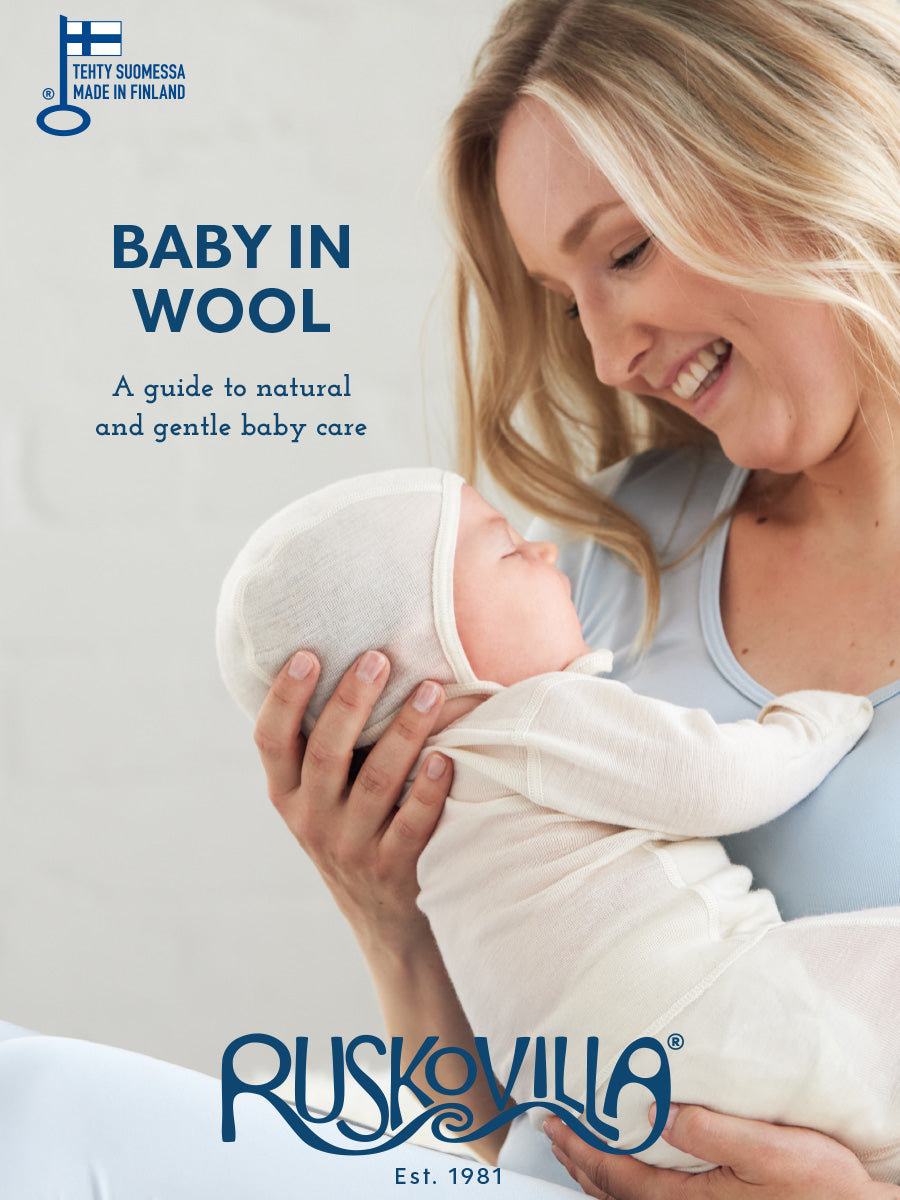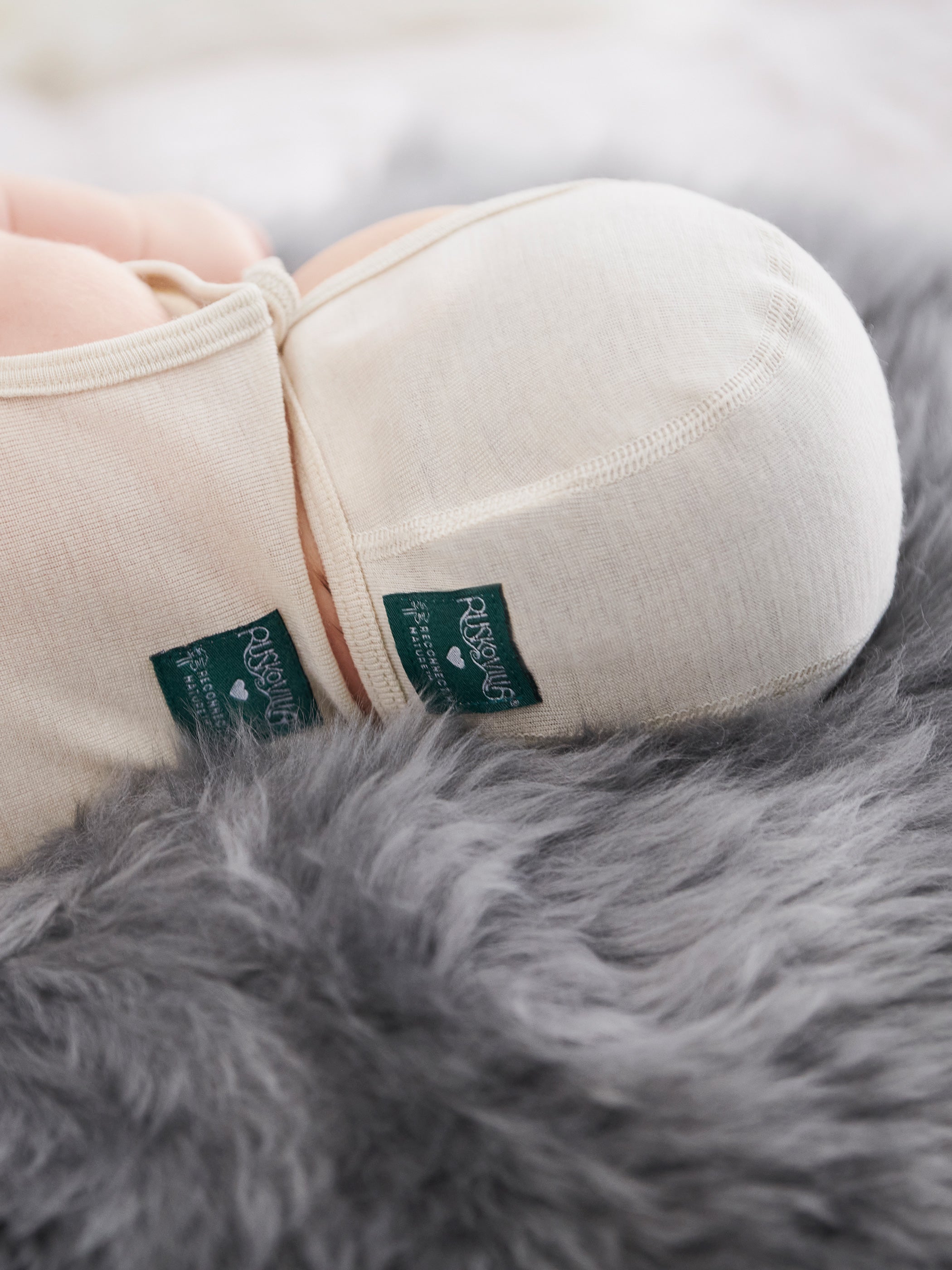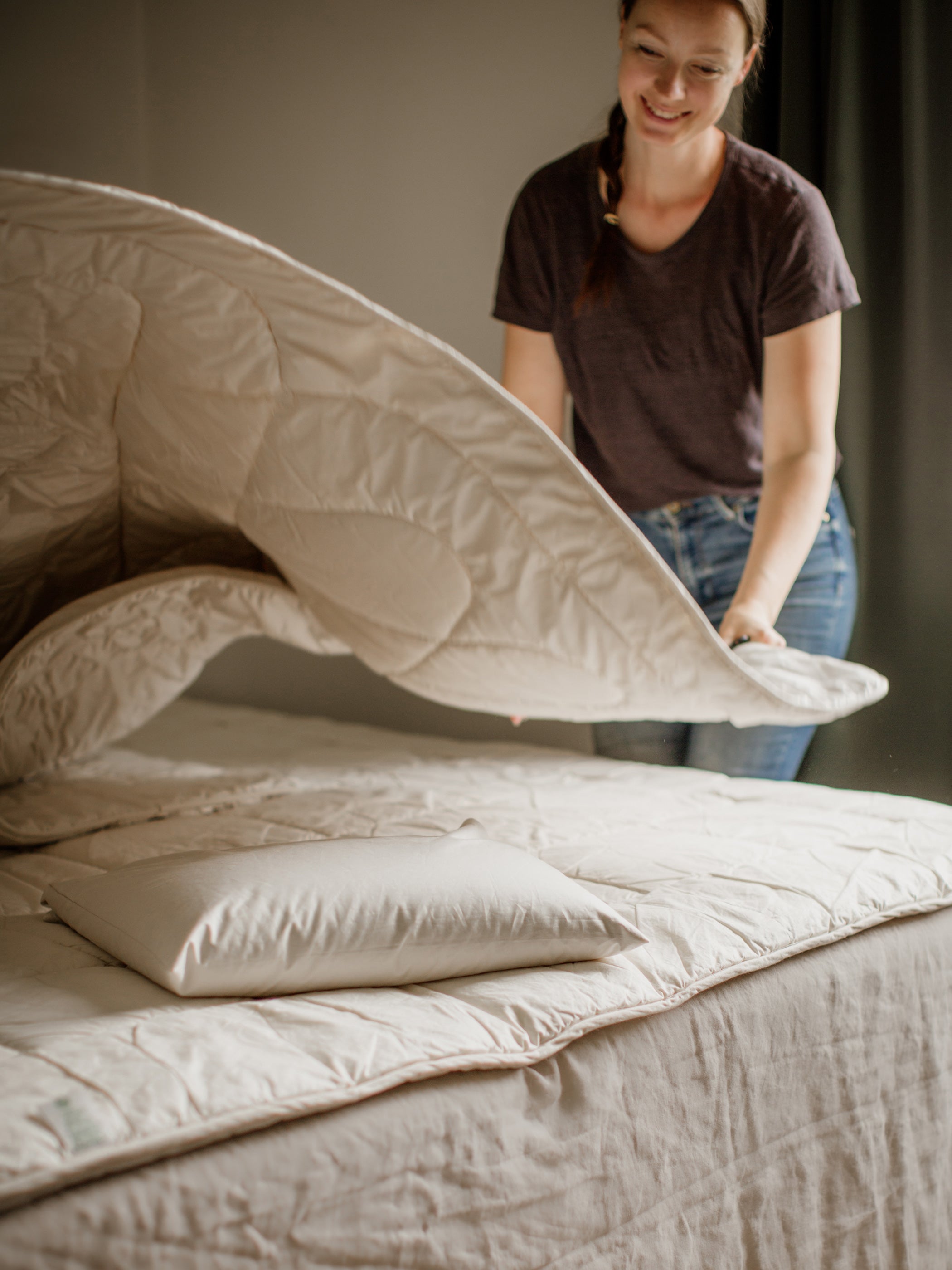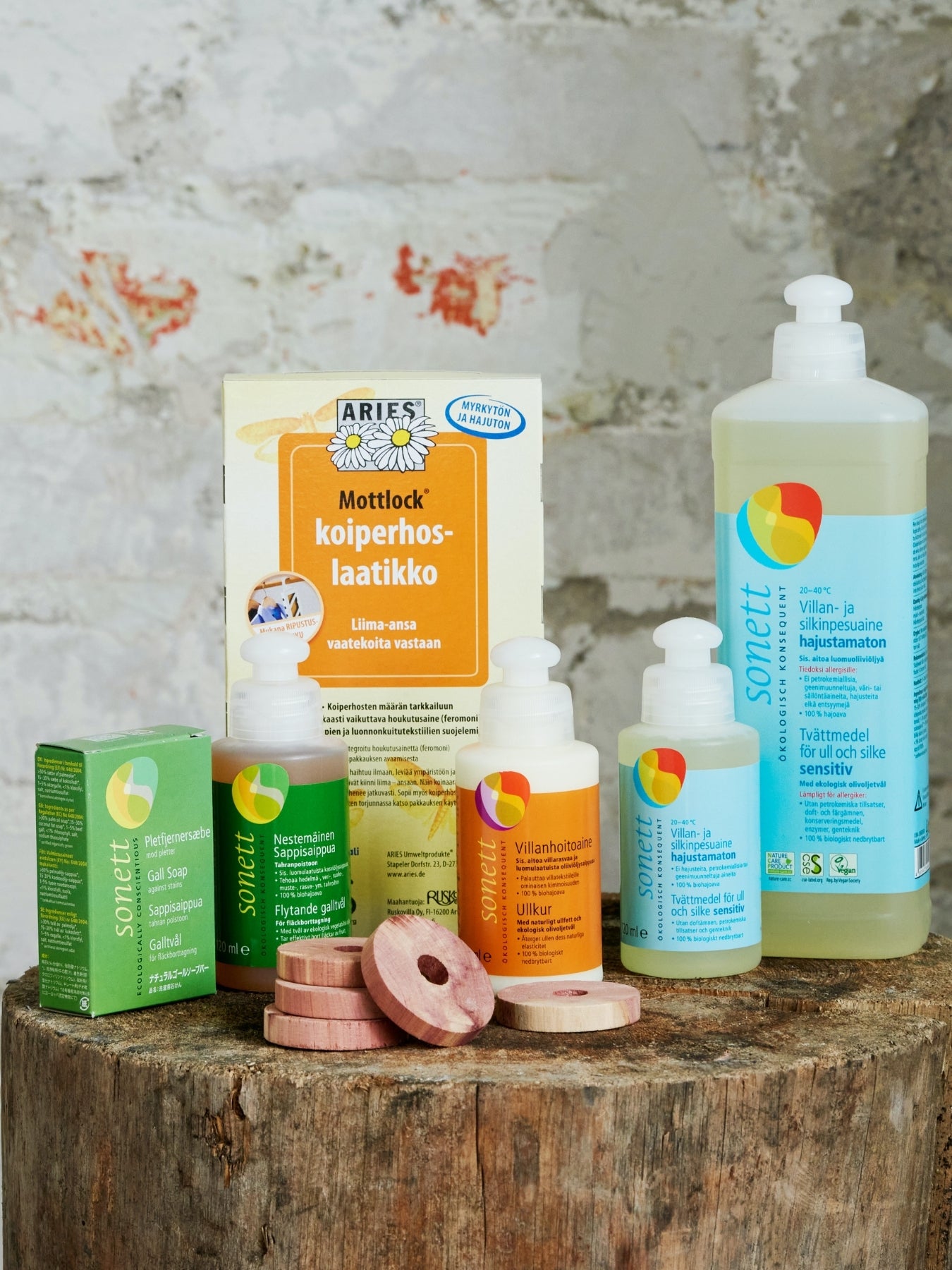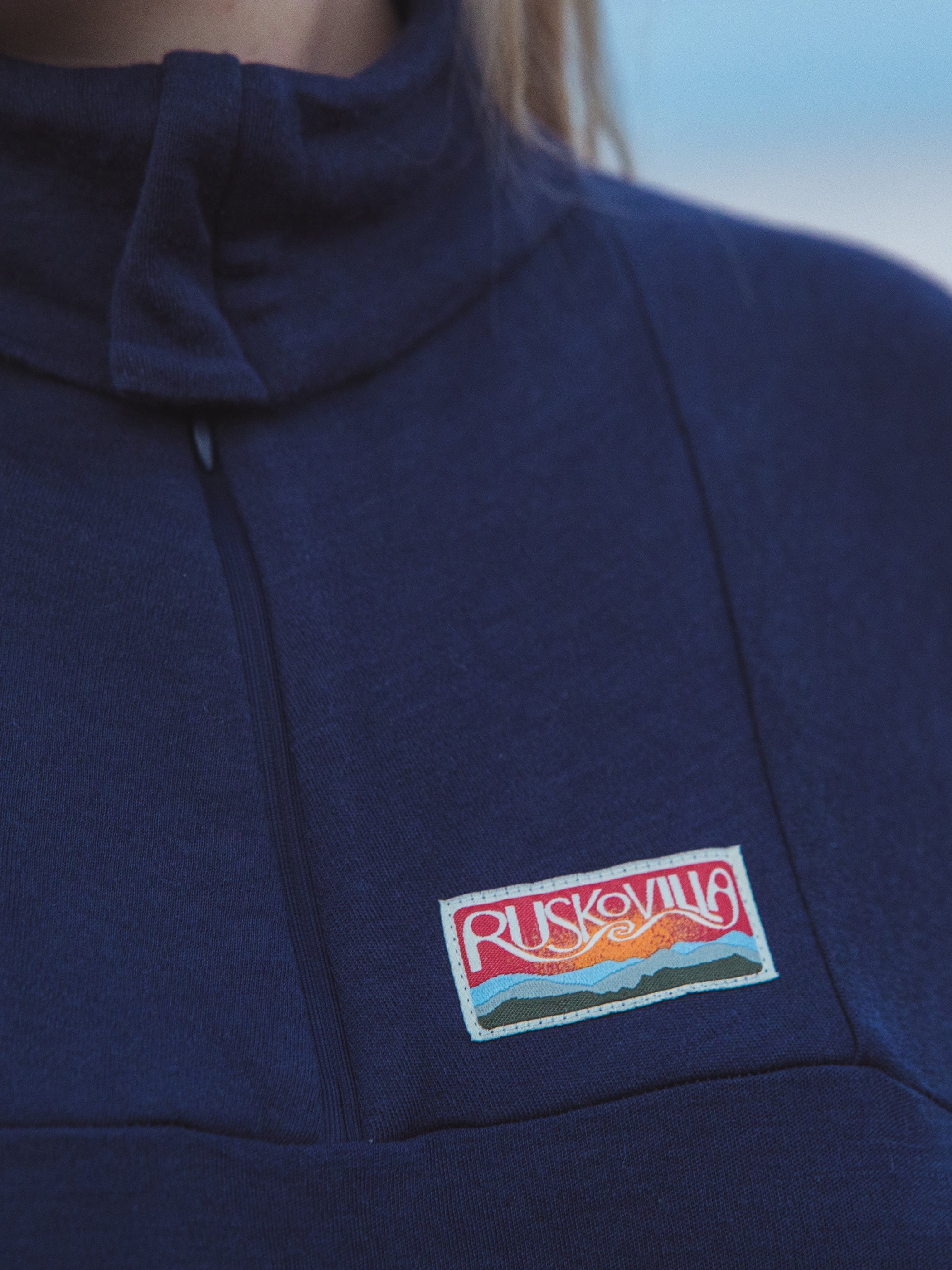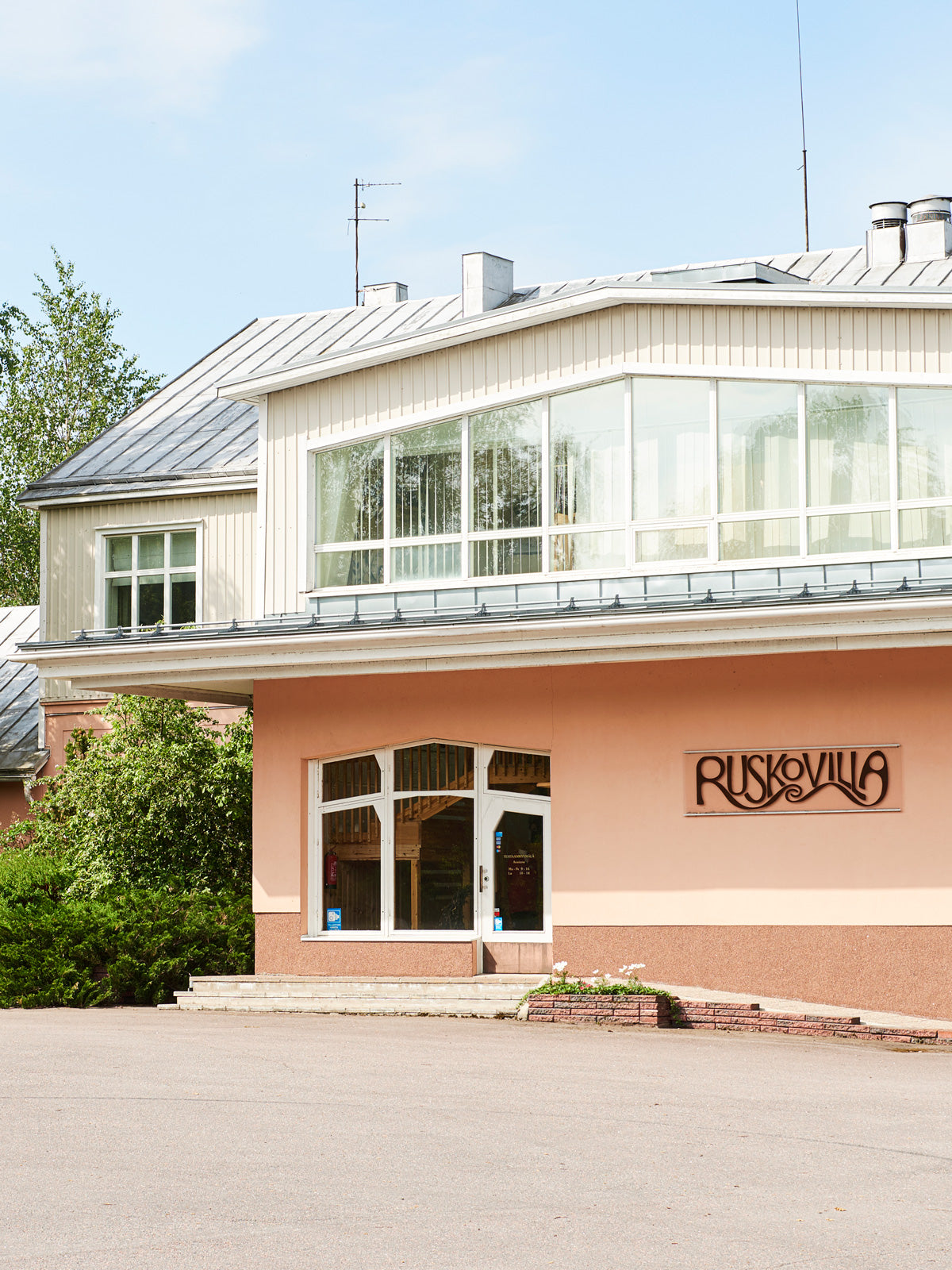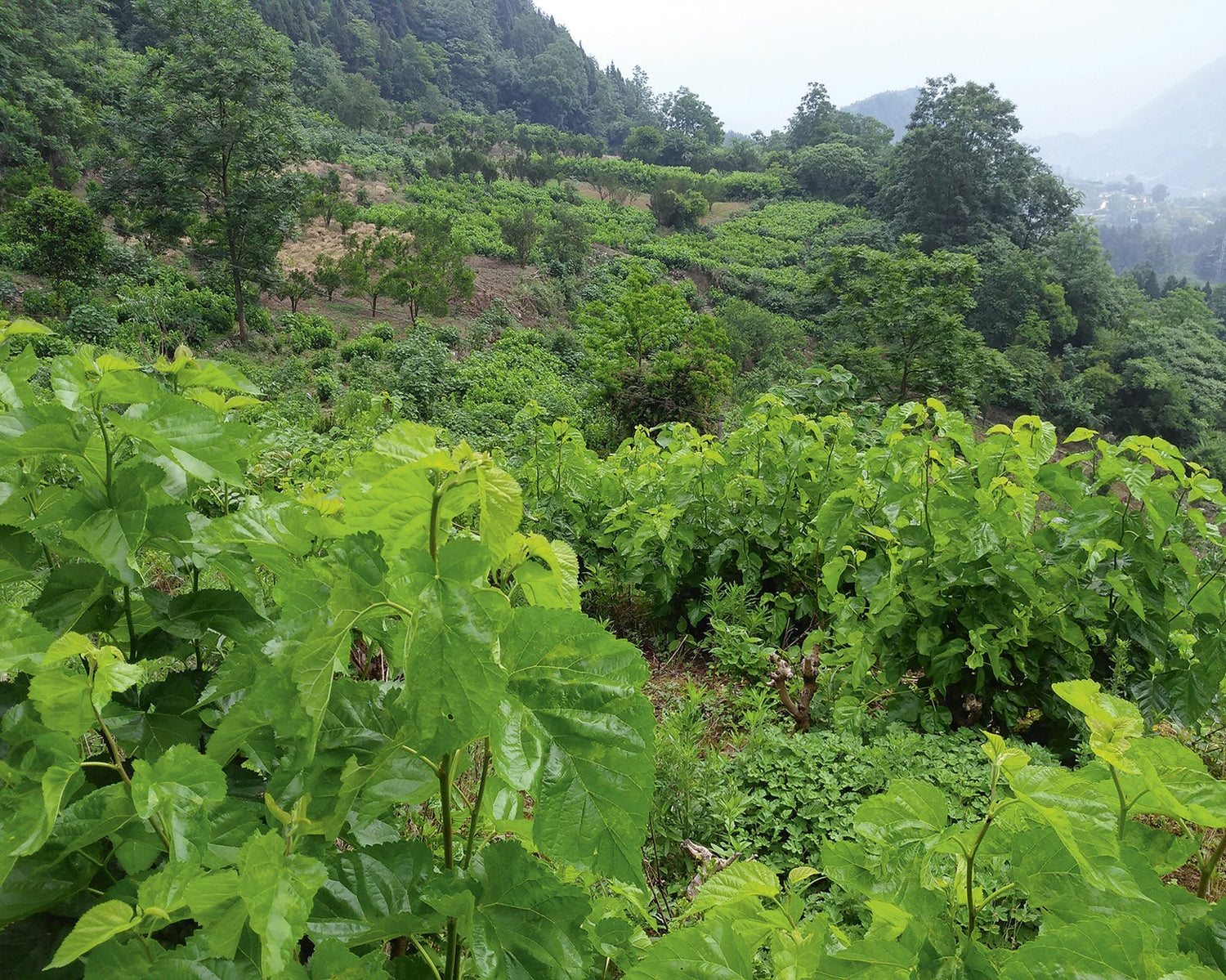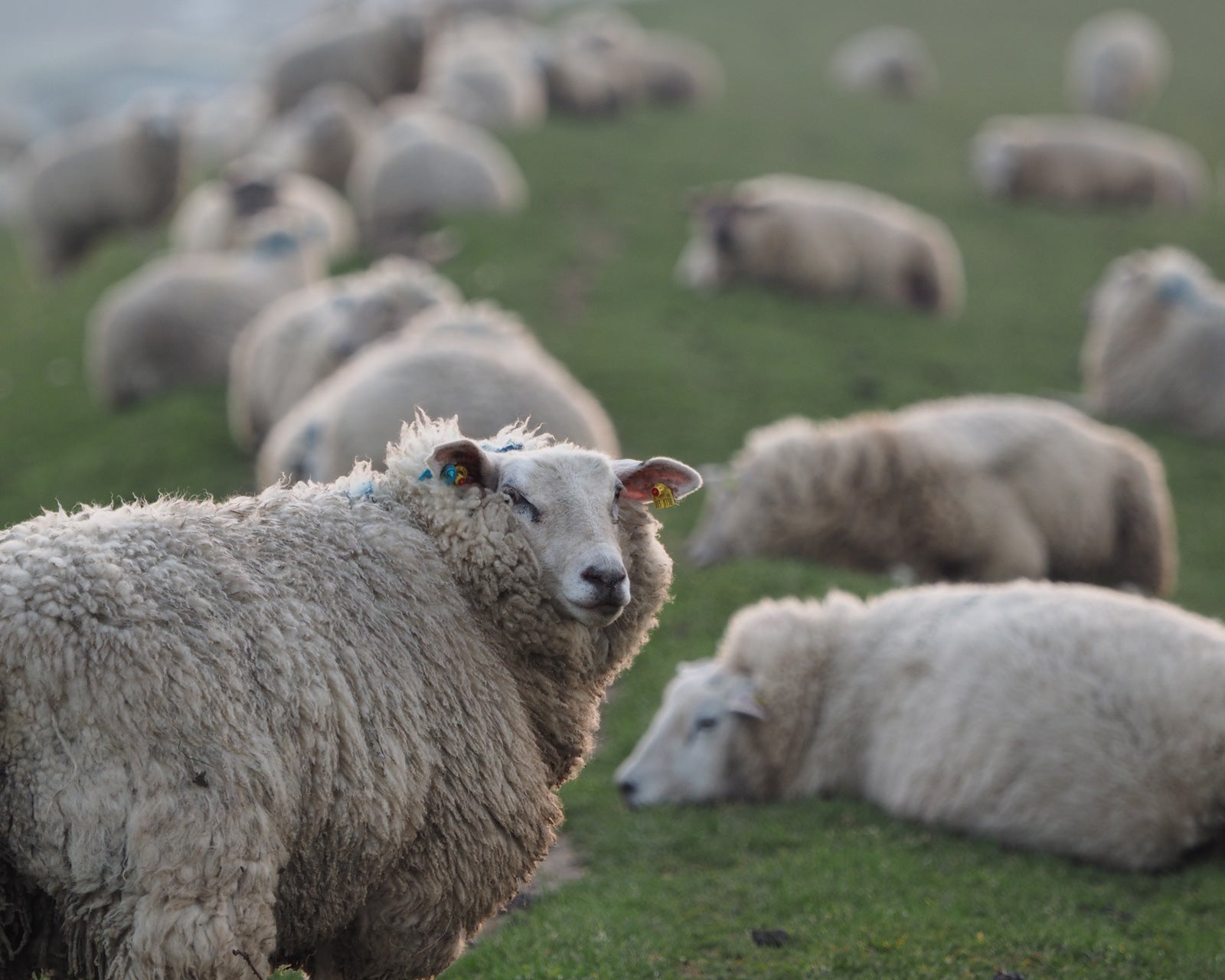Thousands of years of silk production have been preserved in the Qianjiang mountains of central China. In spring 2018, we had the unique opportunity to visit the birthplace of organic silk.

We were able to climb up the mountainside to watch the leaves being collected by the sackful for the ever-growing, voracious caterpillars. The caterpillars' food plants, mulberry trees, are kept bushy by pruning to make leaf collection easier. At the same time, we learned about the farm's organic farming practices and got to know the workers.

Our visit was timed so that we could see the caterpillars just before they hatched. At the farm, we were greeted by a few million silkworm larvae, busily munching on the mulberry leaves offered to them under a protective canopy. Caring for the larvae is a delicate job: the temperature has to be just right, and initially the food has to be chopped up by hand up to five times a day, including night feedings. The caterpillars we saw were almost full grown and were fed fresh leaves three times a day.
Biodiversity as a guarantee of quality
Most silk today is produced industrially. The industrial method involves growing enormous monoculture orchards that need support from artificial fertilizers and pesticides. This depletes the nutrients in the soil and damages the whole ecosystem. Because the quality of silk is largely dependent on what the silkworms eat, this inevitably impacts the quality of the fabric and clothing.

However, Ran Longxiang, head of the Qianjiang organic silk farm, has good news for us. No artificial fertilizers or pesticides are used in the production of natural silk, and the silk farming imitates the natural environment of the mulberry trees by keeping the flora diverse. Bees and other insects buzz around fruit trees and animals enjoy a natural habitat among the silk farming plots.

The silk moths have undergone millennia of selective breeding and can no longer survive without humans. One kilogram of silk takes 10,000 silkworms and 250 to 300 kilograms of mulberry leaves to produce. The silkworms are hand-fed around the clock at the organic silk farm, and once they have eaten their fill, they will spin a silk cocoon, kokong, transforming the leaves into a splendid fibre.
After a few days, the cocoons are ready for further processing. They are boiled and sent to a reel room where the 'staple silk' covering the cocoon is brushed off. Underneath is a fine filament silk, a long silk fibre that can be continuous for up to one and a half kilometres. This is precisely the material of which our silk knit is made.

People also need to be well
But on an organic and certified sustainable farm, the well-being of nature alone is not enough. As required by the certificates, the entire production chain has been verified by an independent third party and is traceable down to the individual stages.
The artisanal nature of the production method and the quality of the final product also mean that the farm workers earn significantly more than factory workers. The working environment is also safe and egalitarian.
The filament silk is knitted for our use at the source of the material in China and arrives in arrives ready knitted on the workbench of our professionals. In Artjärvi, Finland, this wonderful material is used to create high-quality and particularly skin-friendly clothing and accessories for the whole family. With over 40 years of experience.



